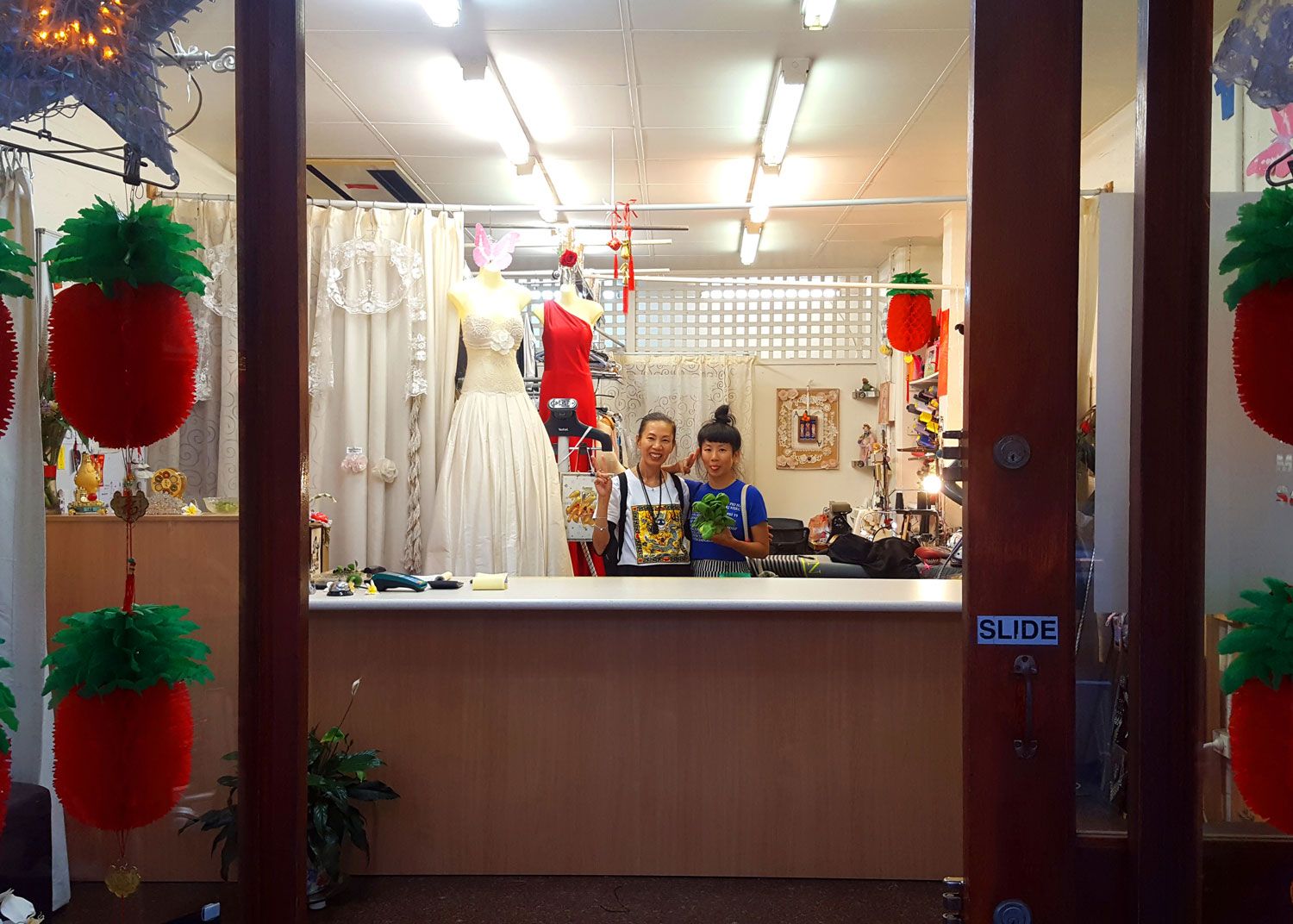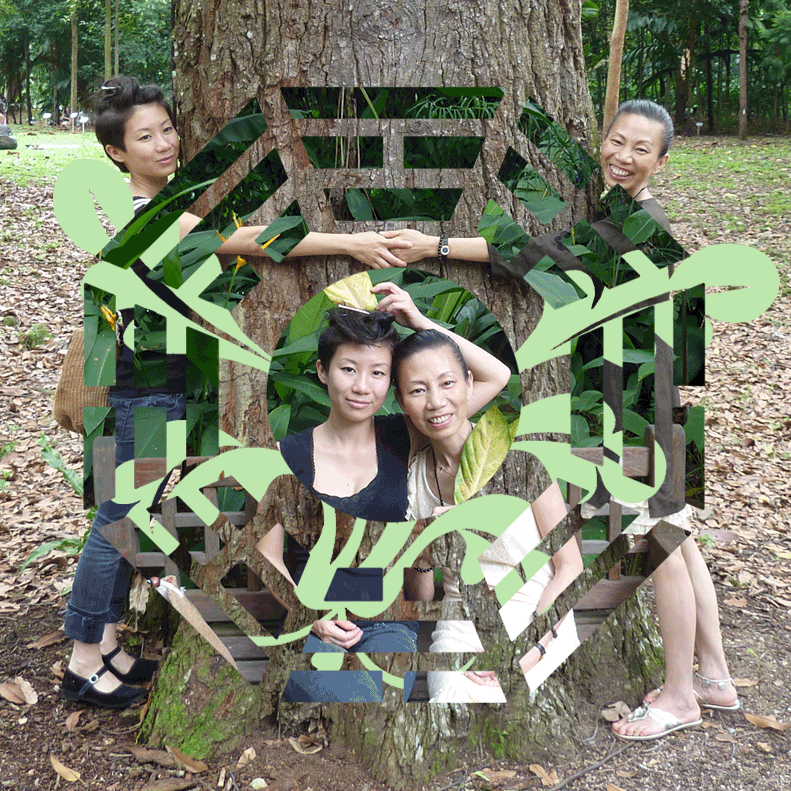About
Serenity Department is an intergenerational mending research project between my mother Maria Ling Qing Huang who lives in Sydney and myself in Rotterdam. We are separated by 15 years, three oceans, and two tongues. In 2019, I returned home to Sydney and spent most of the time in my mother’s mending shop repairing customers’ clothes while attempting to mend our complicated relationship. Since that moment, using literal and metaphorical mending practices, my mother and I have embarked on a process that engages with the ruptures of language, distance, sickness, time, and culture, torn by experiences of migration and intergenerational trauma.

My mother and I in her mending shop in Sydney, Jenny's Dry Cleaning Alterations, 2019
Upon returning to Rotterdam from Sydney, I wanted to find new ways to maintain our long-distance relationship. Some years ago she told me about her idea to write a book about her life. One of the things that came to my mind was encouraging my mother to draw her life story as I felt that writing might be too heavy of a task. I also suggested drawing because as I cannot read Chinese I yearned for an opportunity for my mother and me to find common languages through a collaborative endeavour. From the very beginning, the idea was to publish her drawings and my writings on our shared passion for clothing and textile. And so with hope and excitement in our hearts, we auspiciously blessed this new mother and daughter venture with the name Serenity Department.
Through this ongoing dialogue between my mother and myself, we have experimented with intergenerational mending methods or what we call ‘stitches’ in an attempt to find a deeper connection with each other. Borrowing from the world of textile, this website and research can be seen as a sampler1 of intergenerational mending stitches – a surface to record stitches as methods, and document my mother's drawings, our conversations, and my reflections.
Growing up in Australia, one defining rupture that has shaped our relationship is that of language: she spoke Chinese and broken English and I spoke English and broken Chinese. Miscommunication and alienation have been our common tongue. With little vocabularies of the heart, we grew apart, imprisoned in our conspiracies of each other. In light of this, the heart of this project is my mother's drawings as graphic medicine. Graphic images have become the space for us to communicate our emotions where spoken language had failed us otherwise. Using my mother’s drawings as a starting point to discuss difficult feelings about our past, these images have become a medicinal balm tending to the wounds of language, translation, and memory.

My mother and I making backpacks with the unclaimed garments left by her customers from her shop, 2019
Even though we didn’t always understand each other, sewing and making have always been ways for my mother and me to share the same space. Through this process, we discovered that making together is yet another common tongue for us. She taught me everything I know about her sewing craft and nurtured my creativity. She is my original style guru. Mending, after all, is a family business, an embodied heirloom passed down from my mother that we’re now using as a an instrument of reconnection. Other stitches documented here include naval expanding, immersion, ghostwriting, and embodied publishing.
This website is at once a space of research, reflection, and documentation as affective labour, as well as a webshop where my mother’s upcycled handicrafts are sold as financial labour. This two-fold website is inspired by the Qiaopi trade, a remittance network set up in the 19th to 20th century by overseas Chinese communities to economically support their families in China2. It was a combination of family correspondence and remittance; on one hand, a gesture of affective labour and on the other financial labour – infrastructure that enabled the circulation of emotional care as well as material support.
Drawing from this alternative support network built by early Chinese Diaspora, the project is designed with this reference in mind in thinking about caring for others who are not physically close, a question that is rendered radically urgent in the wake of the current global health crisis. As such, Serenity Department’s efforts are also framed as design and publishing as remittance. All proceeds of the webshop go to my mother’s retirement fund so that she might come to know serenity in her near future.

In the world of textiles, a sampler is a piece of cloth that records different stitches and techniques for personal reference, much like a glossary.
These letters are now part of the UNESCO Memory of the World register and archived in my family's hometown in Shantou, China.

